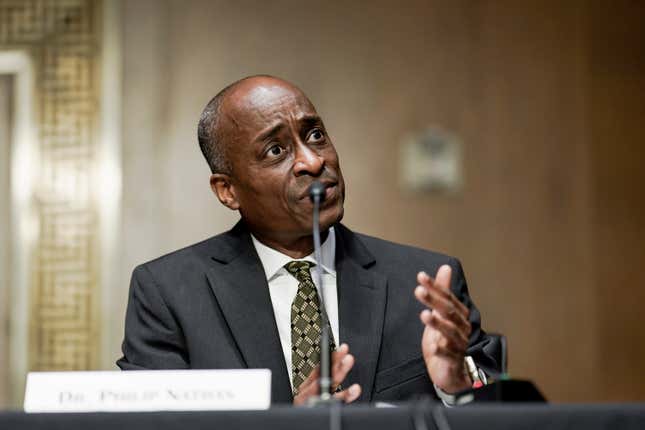
Federal Reserve Vice Chair Philip Jefferson warned that announced tariffs and the uncertainty surrounding U.S. trade policy could derail any recent progress on inflation, highlighting a growing concern inside the central bank as it navigates a murky economic landscape.
Speaking Wednesday at a conference hosted by the New York Fed, Jefferson said in prepared remarks that while core inflation has gradually cooled — thanks in part to easing housing costs — protectionist trade barriers could reverse that trend and cause at least a short-term uptick in prices.
“There is much uncertainty,” he said, “around the future path of inflation.”
Jefferson said heightened precariousness of government policy — particularly trade — has prompted him to lower his outlook for economic growth in 2025. Though he still expects the economy to expand, he cautioned that sustained tariffs could interrupt the Fed’s progress on inflation.
“If the increases in tariffs announced so far are sustained, they are likely to interrupt progress on disinflation and generate at least a temporary rise in inflation,” Jefferson said.
He also noted that, although short-term inflation expectations have risen in both surveys and markets, most long-term measures have remained largely steady — a sign, he said, of continued confidence in the Fed’s commitment to price stability.
The vice chair’s inflation warning comes as the Trump administration and China announced a temporary 90-day truce in the trade war. Under the agreement, tariffs on many Chinese goods will be reduced from 145% to 30%, a shift aimed at easing tensions but not fully unwinding the broader tariff regime. While the move lowers the immediate risk of a full-blown recession, economists say it likely won’t be enough to prevent an economic slowdown.
Jefferson said that “whether tariffs create persistent upward pressure on inflation will depend on how trade policy is implemented, the pass-through to consumer prices, the reaction of supply chains, and the performance of the economy.”
The Fed left interest rates unchanged in its most recent meeting, signaling a continued wait-and-see approach amid crosscurrents in the economy. Jefferson said he supported the decision, describing the current stance of policy as “well positioned to respond to developments that may arise.” He added that recent inflation data show further progress toward the Fed’s 2% target but cautioned that the “goal has not yet been reached”; rates are currently a “moderately restrictive” level.
And despite an April Consumer Price Index that showed cooling inflation, the Federal Reserve Chair isn’t expected to make any interest rate cuts any time soon.
Core PCE, the Fed’s preferred inflation gauge, rose 2.6% year-over-year in March. Jefferson noted that while housing inflation has come down, other components, particularly goods prices, have recently edged up, and short-term inflation expectations are on the rise.
And while the labor market remains resilient — the unemployment rate held steady at 4.2% in April, and job growth continues to track a stable pace — Jefferson warned that labor market conditions could soften if tariffs begin to bite into business investment and hiring.
“Of course, trade policy is still evolving, so its ultimate economic implications are not known, and I will be following developments carefully,” he added.